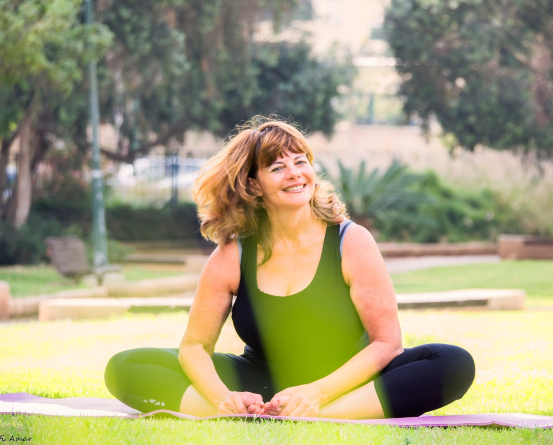Yoga Philosophy

What is YogaFlow Style?
10 בDecember 2018
Yoga for Disease Prevention
12 בDecember 2018
Yoga Philosophy:
Eight Limbs of Ashtanga Yoga and the Yoga Sutras
In modern day yoga practice there is an emphasis on physical practice, however, it is important to learn and understand that behind the physical practice lies a deep philosophy thousands of years old whose purpose is to improve the physical practice and apply yoga in daily life.
The Yoga Sutras
The most fundamental texts on yoga that are the basis of yoga philosophy are the sutras of Patanjali, dated back to the 2nd century BC.
A sutra is a thread and the yoga sutras are combinations of words and sentences that are threaded together to form a fabric which composes the science, art and philosophy of yoga and teach us how to live our lives.
The sutras define yoga, its purpose and goal, the obstacles and difficulties that may hinder us in achieving this goal, tools in order to overcome these obstacles, and the benefits and fruits of attaining this goal.
There are eight limbs of yoga philosophy called “Ashtanga Yoga”:
- Yama - codes of conduct, self-restraint:
* nonviolence
* not lying
* not stealing
* not lusting
* non-attachment.
- Niyama – codes of observances:
cleanliness, contentment, discipline, self-study, and surrender to the universe
- Āsana - integration of mind and body through physical practice.
- Pranayama - regulation of breath and breath control leading to integration of mind and body.
- Pratyahara - withdrawal of the senses of perception from their objects.
- Dharana - concentration, one-pointedness of mind.
- Dhyana - meditation (quiet activity that leads to samadhi).
- Samadhi - the quiet state of blissful awareness, superconscious state.
"Take time to list all the things you are grateful for, feel feelings of gratitude and feel amazing every day. Your frequency will be high and you will move through your days in love with being alive, bringing joy wherever you go, positively affecting one person after another. When you live a life like this, everything you want will come before you even ask." ~ The Secret Daily Teachings
Emphasis on Asana in Yoga Practice
Current yoga instruction places great emphasis on asana practice since in our modern day living, we are filled with many distractions and obstacles which make it very difficult for us to move forward to pranayama practice, meditation and reach ultimate peace and bliss (Samadhi).
The purpose of asana practice is to strengthen the body, improve flexibility and vitality, cleanse the body of its toxins and, facilitate the flow of prana in the body. All of these actions will prepare the body and the mind for pranayama and meditation for extended periods of time in order to be able reach samadhi.
Patanjali’s eight limbed path to yoga is built very systematically. In order for us to be able to achieve Samadhi (ultimate bliss and liberation), we must go through all other seven limbs in the order which they are listed, like building blocks that build on one another to attain the final goal.
Asana is the third limb in Patanjali’s eight limbed path to yoga. After understanding the ethical restraints (yamas) and observances (niyamas) that we must abide, in order for us to be able to continue on to pranayama (controlled breathing), and then pratyahara (turning the senses inwards), dharana (concentration on a single object), diyana (meditation) and reach ultimate samadhi (bliss, liberation), we must practice asana practice to prepare our body for these following limbs.
A great emphasis on asana practice enables proper preparation of the body and mind for pranayama and meditation. This is important in modern day yoga practice, since in our modern day living we have many distractions and obstacles which make our body stiff and, in many cases, unbalanced, making it very difficult for us to enter the deeper and higher levels of meditation. Asana practice is a good foundation for learning about yoga since it is a physical practice and its benefits are attained must more easily than the other seven limbs. However, the disadvantage of such great emphasis is placed on asana practice is that in many cases, the entire focus is placed on the physical practice and the other aspects of yoga are neglected.Therefore, when practicing yoga, it is very important to maintain a balance, i.e., focus on the asana practice but leave time and awareness for pranayama, meditation and contemplation. When doing so, we will be able to attain ultimate inner peace and bliss.

A Look at some of the Yoga Sutras:
1. “Yoga Now”: Atha Yogananusasanam
One of the most fundamental principles of yoga philosophy is: “Yoga Now” (Atha Yogananusasanam) which teaches us that we must practice yoga and be present every moment.
This is, in fact, the mindfulness principle which is very popular in modern day living. Yoga speaks of mindfulness for thousands of years! Yoga teaches us to listen to our body and our breath, be present in the moment, allow ourselves to experience what we are feeling and act accordingly.
“Breathe deeply and appreciate the moment. Living in the moment could be the meaning of life.” ` Anonymous
2. “Yoga is Quieting of the Mind” (Yoga Citta Vrtti Nirodhah)
The essence of yoga is quieting the mind. When we are is a state of yoga, we are at peace - there is a union between our body, soul and spirit, peace and serenity. This is our natural state.
The problem is our mind is constantly filled with noises (“vrittis”) that interrupt our peace and balance. Our thoughts begin to control us and we live in a state of fear, worry, misery and suffering. Most of our suffering is a result of the fact that we aren’t living in the present but live in memories from the past or fear of the future. Our fears are created by our mind and are therefore not real or have any real holding on reality.
When we practice yoga, we practice being present in the moment (mindfulness). Regular yoga practice aids us in reducing stress, anxiety and fear and enables us to live calm, peaceful, happy and healthy lives.
“Meditate. Live purely. Be quiet. Do your work with mastery. Like the moon, come out from behind the clouds! Shine!” Buddha
3. Avidya
Yoga describes “avidya” which is “ignorance” or “misguided conception” and is the source of all suffering and pain. Avidya (ignorance) is the base of all obstacles which distort reality:
- Ego – our ego and pride that hinders our ability to accept and be open to ideas and thoughts different from ours, to admit our mistakes, etc.
- Attachment – holding on to objects, misguided conceptions, a certain reality that we refuse to release, even though it no longer serves us or is right for us.
- Refusal – our stubbornness and refusal to accept thoughts or circumstances that are different from ours.
- Fear – fear of change, fear of the unknown, etc.
The purpose of yoga is to reduce our ignorance (avidya) by practicing mindfulness and presence in the present moment.
Our fears are mostly a result of our thoughts about our past or about what we imagine may happen in the future. These thoughts have no holding on present reality.
Our fears are created by our mind and are therefore imaginary with no holding on reality.
When we practice yoga, we practice being present in the moment (mindfulness).
Regular yoga practice aids us in reducing stress, anxiety and fear and enables us to live calm, peaceful, happy and healthy lives.
Breath awareness and focusing on our breath during our physical yoga practice on the mat, aids us in focusing on the present moment and reduce the “wandering of the mind” and thoughts.
We train ourselves to become more aware of what we receive via our senses and experience life more vividly, accurately and live calmer, more peaceful, happier and healthier lives.
“We need to find God, and he cannot be found in noise and restlessness. God is the friend of silence. See how nature - trees, flowers, grass- grows in silence; see the stars, the moon and the sun, how they move in silence... We need silence to be able to touch souls.” ~Mother Teresa
4. Sthira Sukram Asanam
Patanjali’s Sutra 2.46, “Sthira sukham asanam” states that “Asana is a steady, comfortable posture” (1) or “Asana must have the dual qualities of alertness and relaxation” (2). This also coincides with the principle of the three gunas (satva, rajas and tamas) which states that “in order to reach balance and peace, all three gunas must be in equilibrium” (3). Thus, when practicing asanas, it is important that we maintain the elements of rajas (activity, effort) and tamas (inertia, relaxation) in our body in order to reach satva (tranquility and comfort).
In order to creating a safe, active and balanced asana practice, it is most important to apply this sutra to each asana since only when we listen to our body and follow our breath, we can practice safely and comfortably and ensure a safe and well-balanced practice and prevent injuries and damage to our body.
Asanas should be practiced keeping in mind both actions and counteractions in order to ensure that they are practiced safely and bring the body into balance in a pose, maintaining both alertness and relaxation in the body during the asana. Great emphasis should be placed on a proper foundation and foundation position since the foundation is the keystone of the pose and is important in order to ensure proper alignment.
The awareness of the breath and the use of controlled breathing throughout the practice is a key factor to ensure a safe, balanced and comfortable practice since the breath is the key tool that brings us to the present moment and links the body to the mind, enabling us to practice safely.
Applying all of these principles in asana practice will ensure a safe, comfortable practice and enable us to quiet our body and mind, thus preparing ourselves for pranayama, meditation and, ultimately be able to reach samadhi.
"I love to watch how birds soar on the wind. There appears to be such little effort, yet such joy.I want to become like a bird and let my spirit soar on the winds that are blowing through my life. I will not be crushed against the rocks! I will sense the rhythm, the flow, and react accordingly. I will trust my inner guide."~ J. Garrett Garrison& S. Sheperd
(1) The Yoga Sutra’s of Patanjali
(2) The Heart of Yoga, Desikashar
(3) The Yoga Sutra’s of Patanjali






